A Kid's Guide to the Croatian Flag and Symbolism
AN EDUCATIONAL PAGE TO UNDERSTAND THE MEANING OF THE CROATIAN FLAG
The Kingdom of Croatia and its Legacy
Croatia is a country in Europe with a long and interesting history. People have lived there for thousands of years. Around the year 925, Croatia became a kingdom with its own ruler, laws, and army. One of the most famous Croatian kings was the first one, King Tomislav, who helped unite the country and protect it from enemies.
Over the centuries, Croatia became part of other countries, like Hungary, Austria, and Yugoslavia, but the people always remembered their own language, culture, and symbols. By the 1800s, Croatians had begun using red, white, and blue as their national colors. These colors came from the colors used by old kingdoms that once ruled over parts of what is now Croatia: red and white from the kingdom of Croatia, blue and white from the kingdom of Slavonia, and blue and yellow from the kingdom of Dalmatia.
In 1990, Croatia began moving toward becoming an independent country again, and during this process, it adopted a new flag. The flag has three stripes: a red stripe, a white stripe, and a blue stripe. It also has the coat of arms of Croatia in the middle. This coat of arms consists of a checkerboard-patterned shield topped with a crown made of five smaller shields. The person who designed the flag was Miroslav Šutej, a Croatian artist. The flag helps to tell the story of Croatia’s proud past and strong spirit, and each part has a special meaning.
The Meaning Behind the Red Stripe
The red stripe on the Croatian flag stands for bravery and strength. The people of Croatia have always been courageous, especially when defending their land. Red reminds everyone of the courage shown by those who lived long ago and the people who live in Croatia today.
The Meaning Behind the White Stripe
The white stripe stands for honesty and peace. White is a calm, clean color, reflecting the desire to live with fairness, kindness, and harmony. It also reminds Croatians of snow on the mountains and the natural beauty of their country.
The Meaning Behind the Blue Stripe
The blue stripe represents the sky and the sea. Croatia is known for its beautiful coastline along the Adriatic Sea, with bright blue waters full of life. The blue also stands for peace and hope, values that are very important to the people of Croatia.
The Meaning Behind the Checkerboard
In the middle of the flag is a red and white checkerboard known as the sahovnica (pronounced “shah-HOHV-nee-tsa”). This symbol has been associated with Croatia for centuries and is a key element of the national coat of arms. The red and white squares represent the Croatian people, diverse but united. The checkerboard symbolizes pride and the long history of the Croatian nation.
The Meaning Behind the Crown of Shields
Above the checkerboard is a crown made of five smaller shields, each representing a different historical region of Croatia:
- The first shield features a star and a crescent moon, symbolizing Croatia’s oldest known coat of arms.
- The second shield shows two red stripes on a blue field, representing Dubrovnik, a famous city with stone walls and a long history.
- The third shield has three lion heads, symbolizing Dalmatia, the sunny southern region by the sea, known for its islands and ancient cities.
- The fourth shield shows a golden goat on a blue background and represents Istria, a hilly area in the west with farms and forests.
- The fifth shield shows a marten running on a red field bordered by two silver stripes, and it stands for Slavonia, the eastern part of Croatia, which has wide fields, forests, and rivers.
These five shields show how all of the different regions of Croatia have come together to form one country.
Further Reading About Croatia
- Croatian Symbols of State
- Meet the National Flower of Croatia
- All About Croatia
- Licitars: Warm Hearts of Zagreb
- Croatia for Kids
- Balkanization: The Animated History of Croatia
- Croatian Citizenship by Descent
- Understanding Croatia’s National Anthem
- The Pine Marten and Croatian Currency
- Gaining Croatian Dual Citizenship
- Different Types of Visas to Enter Croatia
- A Crash Course in Croatia’s History
- Requirements for a Croatian Passport
- The Emergence of Contemporary Croatia
This page was last updated with help by Marco Permunian


